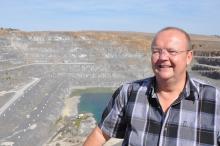Its membership consists largely of smaller individual mines or mining groups with smaller scale operations spread around the country. The new legislation which was developed principally for underground operations and largescale surface mines may be too expensive for many to afford and the association has formed a sub-committee with 37 participating companies, the University of Pretoria and the Minerals Council South Africa to find solutions.
Aspasa director Nico Pienaar says the work thus far has focused on the development of appropriate plans, risk assessments and the development of technologies to suit the needs of this sector of the market.
“According to the legislation all mines need to comply with PDS legislation or face severe penalties in future. This will be particularly harsh in the event of an accident and may lead to mine closures, large fines or jail sentence for responsible parties.
“Our work has therefore focused on finding solutions that will work for us. We have already identified challenges not least of which is the complexity of collision avoidance systems and potential costs.
“We have also hit snags obtaining permission to use PDS equipment in different OEMs' equipment, as well as experiencing difficulty with some mines understanding of Section 21 technical files and a general lack of commitment towards implementation dates, among others,” Pienaar says.
He continues that many OEMs are uncertain of the possible liability and have legitimate safety concerns as far as stoping interventions of vehicles traveling at speeds greater than 10km/h. Many are rather concentrating on International Council on Mining and Metals 2025 target dates for fully integrated OEM solutions.
Industry may also be missing the point as far as assessment of risk is concerned or the lack of effective risk assessments. PDS systems are only required where a risk of pedestrian collision exists and effective risk assessments and mitigation interventions may deem the installation of such devices unnecessary, such as where separation of pedestrians and traffic is concerned or where proper traffic management plans are implemented and properly managed.
Each site is different and requires that these measures be put in place with the involvement of all stakeholders concerned. There also seems to be a general unreadiness among miners, PDS suppliers, equipment OEMs and others to be able to implement PDS solutions in time to meet legislation.
“However, we are committed to making it work in our industry as the benefits are clear to see. We are confident that properly implemented PDS systems will have many benefits including a reduction in accidents and injuries, better management and control of TMM’s, adherence to legislation and the requirements of the MHSA, as well as the creation of a “feel safe environment.
“For now though, we cannot overestimate the importance of our members, and other mines, falling in line with requirements to compile a proper and comprehensive risk assessment, implement fully functional traffic management plans and get committed to the inevitable fact that PDS will become a requirement by law and will be enforced sooner than they may think – time is running out,” Pienaar concludes.









